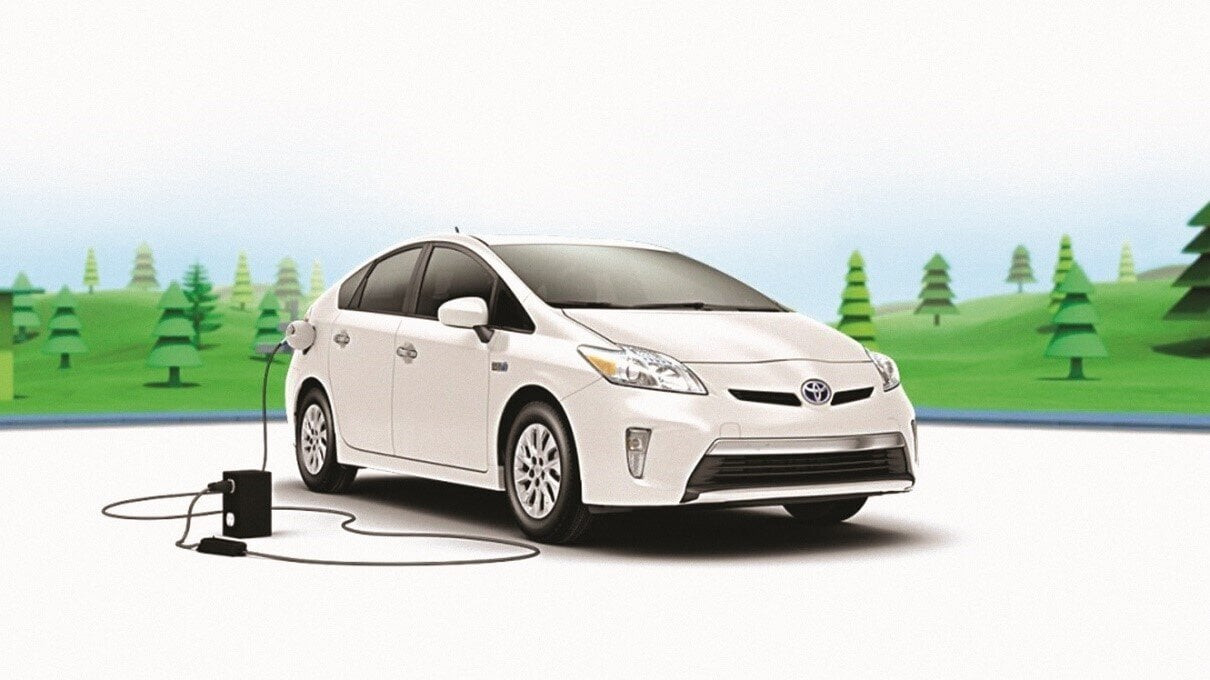Hybrid cars are gradually becoming popular with Vietnamese customers, but many people still do not know and wonder how this car line works?
Hybrid cars, also known as hybrid cars, are products created from the combination of two transmissions, including a gasoline engine and an electric motor. The highlight of hybrid cars is the ability to save fuel, be environmentally friendly and have a powerful engine.
Hybrid vehicles are divided into three basic types of powertrain structures, including: series hybrid, parallel hybrid, and combined hybrid.

CarHybrids are gradually becoming popular with Vietnamese customers.
In a series hybrid, the wheel drive system is directly transmitted from the electric motor. Meanwhile, the internal combustion engine only has the task of charging the battery and providing energy to the electric motor.
With a parallel hybrid, the drivetrain is powered directly by both the electric motor and the internal combustion engine. The central controller automatically determines when both motors operate in parallel and when the motors operate independently.
Finally, the hybrid engine, as the name suggests, is a combination of the series hybrid engine system and the parallel hybrid, helping to maximize the strengths and overcome the disadvantages of both types of engines. Hybrid is widely used in the production of hybrid vehicles today.
How hybrid cars work
Regarding the structure of a hybrid vehicle, if a vehicle runs on a conventional gasoline engine, the engine will be connected to the transmission mechanism that rotates the wheels, but with a hybrid engine, in the middle of this mechanism there is an additional electric motor that shares the task with the gasoline engine. For the mechanism to operate smoothly, additional supporting components such as an inverter, a power divider, a motor reducer and especially a battery pack - the source of energy for the electric motor.
So how do the gasoline engine and electric motor of a hybrid car work together in each phase of the vehicle's movement?
First, when the driver presses the start button, only the electric motor operates, the gasoline engine remains "still". Therefore, the driver will not hear the familiar sound of the gasoline engine when starting the engine. This is also a strange point for customers using a hybrid car for the first time.
When the driver presses the accelerator to move the car, it depends on how the driver operates. If the accelerator is gentle, only the electric motor will still work, providing traction to the drive shaft, pushing the car forward. But if the driver is someone who likes to drive by pressing the accelerator immediately, the car understands that the driver wants to accelerate quickly, at this time the gasoline engine will be activated to support the electric motor.
Whenever the driver steps on the accelerator, whether at a standstill or at a steady speed, the car draws extra power from the battery to supplement the electric motor, while the gasoline engine provides additional power.
When the car has stabilized speed, for example at a steady 60 km/h, only the electric motor will operate, if the battery has enough energy. But at high speeds like this, the petrol engine will be much more willing to intervene than at low speeds, because more traction is needed.
As soon as the driver pushes the gas a little more, the gasoline engine will start, running the generator to provide power to the electric motor as well as providing additional traction to the wheels.
In the next stage, when the car is rolling, the driver releases the accelerator or brakes to slow down, at this time, the engine acts as a generator, using the vehicle's wasted kinetic energy when braking to recharge the hybrid battery.
Finally, when the car comes to a complete stop, for example at a red light, both the gasoline engine and electric motor will automatically shut off to conserve energy.
The first hybrid car debuted in 1899, built by Pieper, Liège, Belgium, and the French power transmission company Vendovelli and Priestly.
In 1997, Toyota launched the Toyota Prius hybrid sedan. At the same time, Honda also introduced the Honda Civic and Honda Civic hybrid. This also marked the development of the hybrid car line officially commercialized in the modern era.